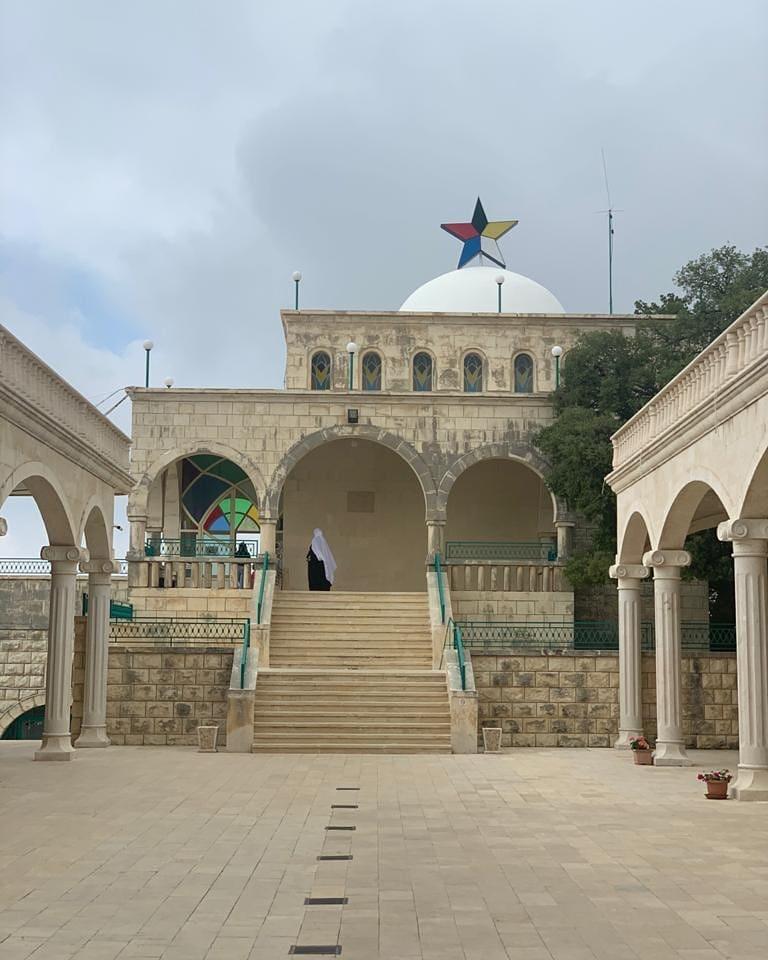Niha
The village of Niha Chouf is located at a distance of 70 km from Beirut, and it can be reached via Damour – Mokhtara, Sidon – Jezzine, or via Kefraya, Bekaa – Maaser Al Chouf – Adran. What is special about this village is that it is the meeting point of three Lebanese governorates : Mount Lebanon, South Lebanon and Bekaa. Among its monuments is its castle located at the top of its mountain, known as the Beshef of Tyron.
The castle is in fact a natural rock that contributed to carving it in the folds of geological contortions. It includes some outlets similar to the entrances to caves and caves that are used to enter its interior. It was dug by nature and human tools. Inside it became a masterpiece represented in rooms carved in the rock, terraces and seven wells, each with a depth of ten meters.
The holy place of the shrine of the Prophet Ayoub. There is no specific date for the existence of this shrine in the village of Niha, but according to the story circulating in Niha, the Prophet Ayoub emigrated from Houran when he fell ill and landed with his wife on a high mound in Niha Al-Shouf, where God healed him there and then left after So, his shrine still exists until now.
The construction of the shrine of the Prophet Ayoub, as we see now, dates back to the nineteenth and twentieth centuries, and it could have been built in several stages on an ancient sacred site.
High in the Lebanese mountains and on top of one of the hills in the town of Niha, a rocky fortress stands a rocky fortress called Niha Castle or Shqif Tyron.
Niha is located 33 km from Beirut, and today it is located within the #Shouf Cedar Biosphere Reserve. As for the name Niha, it is of Syriac origin, meaning calm and comfort, and this is really the natural beauty and calmness of the town of Niha, which makes it an attractive point for those looking for rest and relaxation.
For everyone who wants to visit Lebanon
You can contact us via WhatsApp: 0096181260152
The shrine of the Prophet Job on the top of Mount Niha

by: @kameelrayes
The courtyard of the shrine of the Prophet Job

 by: @travelsofmona
by: @travelsofmonaNiha Castle

Niha Castle is one of the most prominent historical and tourist attractions in the Lebanese Chouf. The castle rises 1200 meters above sea level. It is distinguished by its strategic location that overlooks the Bisri Valley and the passage that connects Sidon and the Bekaa Valley.
According to historical sources, the castle witnessed several historical and military events. Because of its privileged location, it was coveted by many invaders who made it a strategic defensive fortress.
The castle was first owned by a Druze sheikh named Dahhak bin Jandal al-Tamimi, and it was later subjected to many occupations, hits and runs, so the Crusaders occupied it and named it Tyron, and then the castle fell to Salah al-Din al-Ayyubi.
It was also occupied by the Franks, and the governor of Sidon, Saad al-Din bin Nizar Shihab al-Din bin Bahtar al-Tatri, who destroyed and burned it. In the era of the Mamluks, Baybars seized it and then ordered its restoration and fortification.
In the year 1585, Prince Korkmaz, the father of Prince Fakhreddin II, sought refuge in Niha Castle, after the Ottomans chased after him because he was accused of robbing the state treasury. He stayed there until he moved to Jezzine Grotto, where he died. In 1633, Emir Fakhr al-Din II the Great took refuge in the castle for himself, his family and relatives after he was defeated by the Ottomans during the reign of Ahmed Pasha Kıçık.
When Koçek discovered the prince’s refuge, he besieged him for a long time, but without giving up. Al-Kujk polluted the groundwater running to the castle from the al-Halqum spring with the blood of beasts. Fakhreddine was forced to leave the castle, to seek refuge in Jezzine Cave, where he was arrested.
The castle is distinguished by its fortifications and designs formed by geological bends and the human hand. The castle contains a good number of silos and storage rooms that were used to store grain, supplies and ammunition. In addition to seven wells that were intended to collect fresh water from the rain and Al-Halqum spring, located one kilometer from the castle, through canals and mud pipes. The castle also includes rooms, a kitchen, staircases and corridors.
Today, the castle is equipped to receive visitors, after it was restored and equipped with a safe passage that allows access to it despite the danger of the place. The castle is one of the places worth visiting, because of the amazing natural scenes it provides and the richness of heritage and history.
